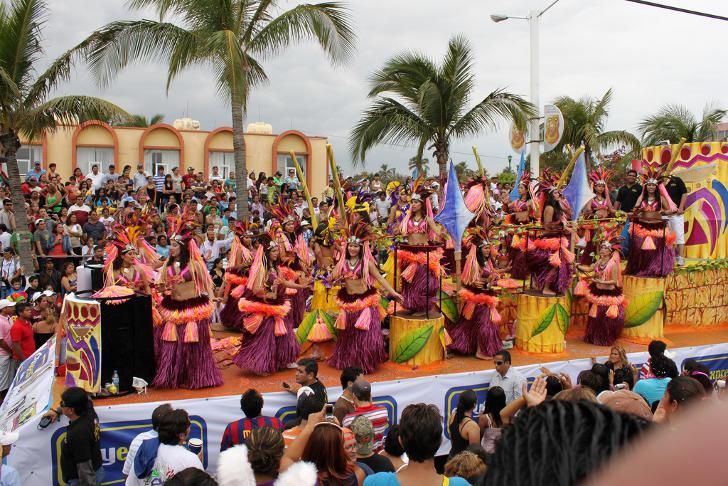The Veracruz Carnival originated during the colonial period. The original major festival for local European, African and indigenous communities was the Feast of Corpus Christi celebrated in May or June but eventually it shifted to the pre-Lenten period known as Carnival. In the late 19th century, a two-week period before Ash Wednesday (the first day of Lent) was filled with formal balls and street celebrations. The Carnival of Veracruz in is modern form was established in 1925, following the Mexican Revolution.
The Carnival of Verakruz opens with the ceremony known as quema del mal humor (“burning of bad mood”). The bad mood is represented by an effigy portraying a disliked famous person, either Mexican or foreign, an event or even an abstract idea. Politicians, celebrities and criminals, as well as the economic crisis, the war and the seven deadly sins have been burned during the ritual.
The program of the Carnival includes six major parades, including a children’s parade, with a minimum of 30 floats each. Allegorical floats were featured for the first time in 1945 and have since become a permanent fixture at the Carnival. Alongside floats, parades feature marching bands, dance troupes, cheerleaders, folk groups, percussionists, costumed characters, and more. They march along the Manuel Avila Camacho Boulevard welcomed by the cheering crowd.
While the parades are the main highlight of the Carnival, its program includes other exciting events such as coronation of the Ugly King and the Queen of the Carnival, public concerts, parties, charity events, and more. Well-known artists that have performed at the Carnival of Veracruz include Christian Castro, Paulina Rubio, Espinoza Paz, and Enrique Iglesias.
The Carnival comes to an end with the mock funeral of Juan Carnival, another effigy that represents the carnival spirit. The funeral is attended by the carnival King and Queen dressed in mourning black. By Ash Wednesday, the Carnival is over.

Photo: HALR2009



